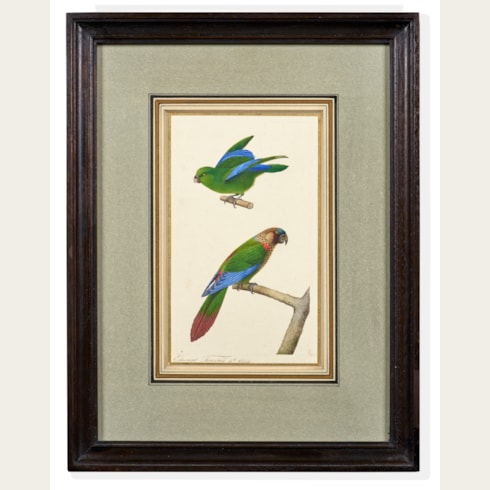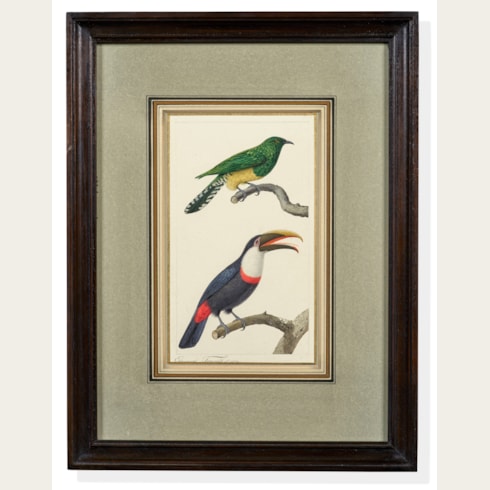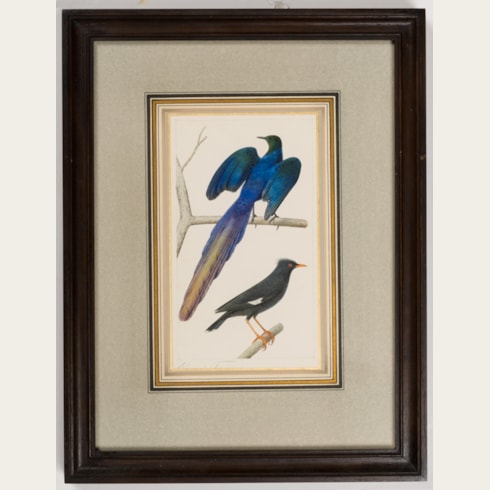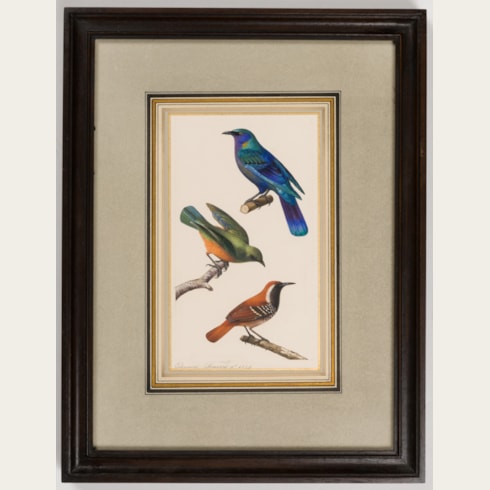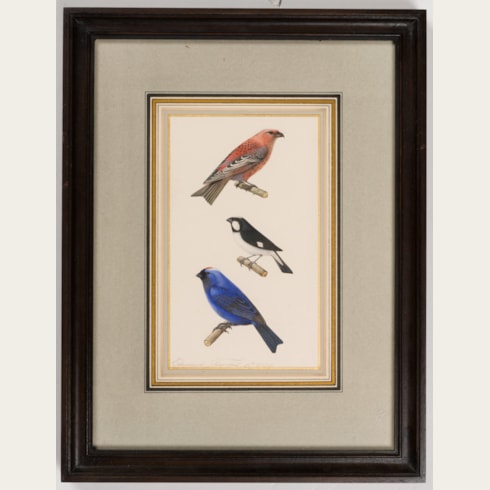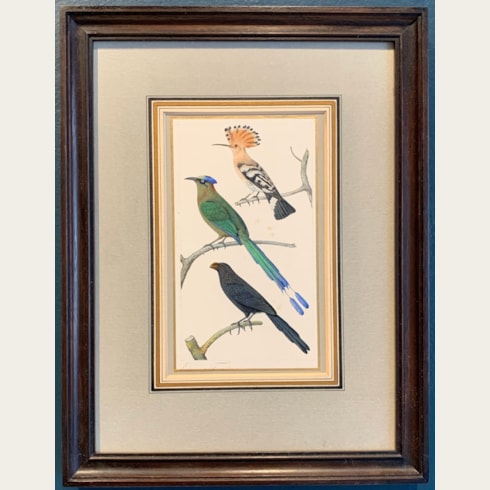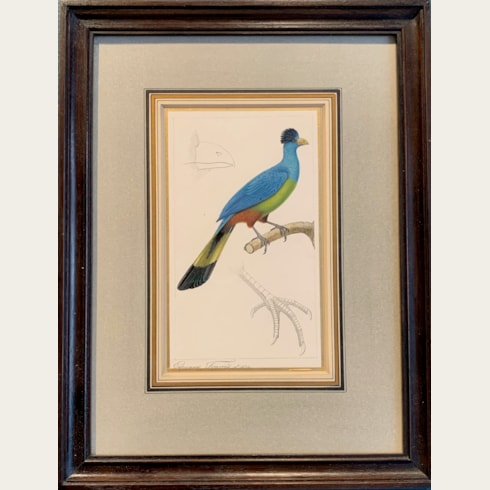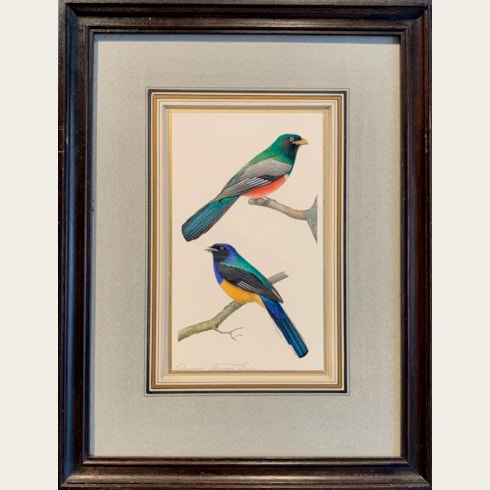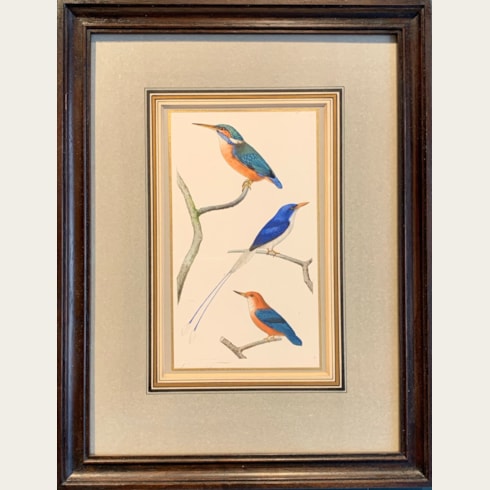Edouard TRAVIES
(Doullens 1809 - Paris 1876)
A White Plumed Antbird (Pithys albifrons) and a Guianan Cock-of-the Rock (Rupicola rupicola)
Signed and dated Edouard Travies pt. 1835. in the lower margin.
170 x 100 cm. (6 3/4 x 4 in.)
Another delightfully colourful and distinctive bird, the Guianan cock-of-the-rock is quite a large species, native to lowland rainforests in northwest and central South America. The bird illustrated here is an adult male, while females are brown and adolescents are a faded orange and brown. As their name suggests, these birds prefer rocky habitats for their nests and are usually herbivores, eating mostly fruit, although, under certain circumstances, they will also eat small invertebrates and insects. The cock-of-the-rock species is solitary, only interacting during mating, with males being particularly territorial. Each male will clear their territory on the forest floor of rocks and twigs, making their markings clear, and females would then come to their territory. Since the brightest coloured males, with the most pronounced ruffs, tend to be the most desirable for mating, this trait has become more pronounced in the species over time.
The French industrialist and bibliophile Marcel Jeanson (1885-1942) assembled an exceptional collection of French ornithological watercolours of the 17th, 18th and 19th centuries assembled in the 1920s and 1930s.
These watercolours by Edouard Traviès were once part of the exceptional collection of French ornithological watercolours of the 17th, 18th and 19th centuries assembled in the 1920s and 1930s by the French industrialist and bibliophile Marcel Jeanson (1885-1942). Several of these watercolours were used to illustrate Achille Richard’s Oeuvres complètes de Buffon, published in Paris in 1834, 1838 and 1845.
Provenance
Thence by descent until 1988
Jeanson sale, Monaco, Sotheby’s, 16 June 1988, lot 309
Richard J. Schwartz, Upper Nyack, New York and Lyford Cay, Bahamas
Thence by descent until 2017.
Literature





